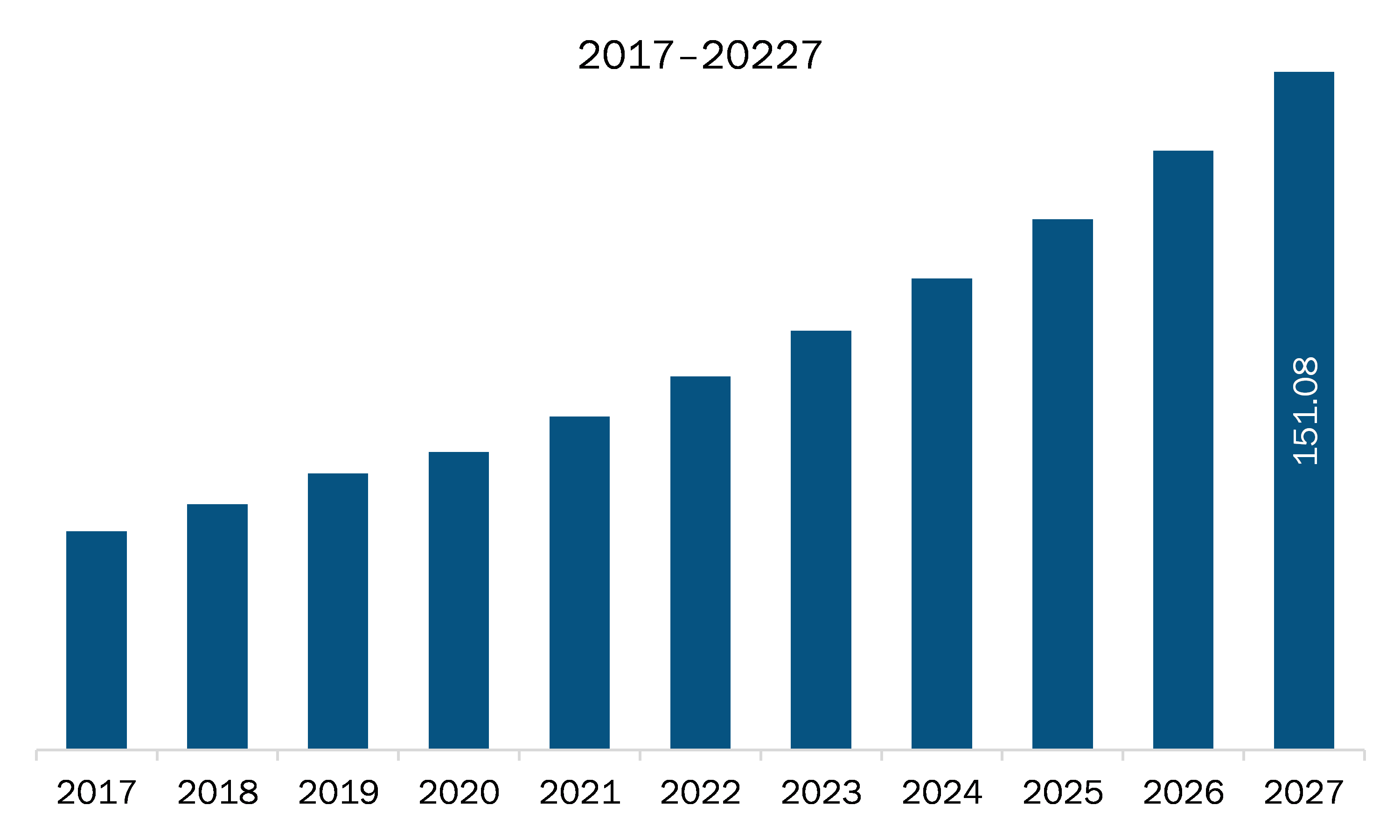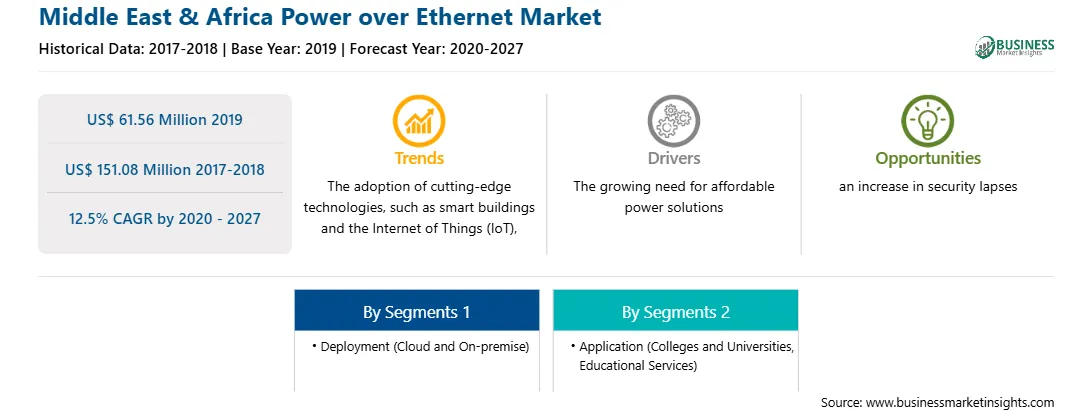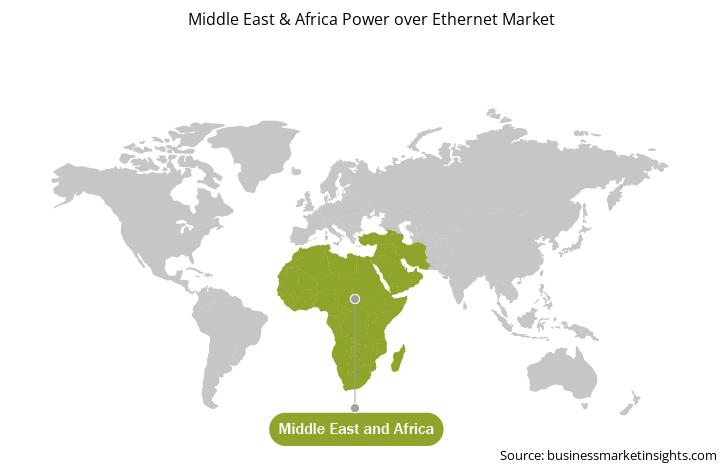The MEA includes countries such as South Africa, Saudi Arabia, and the UAE. The region is projected to witness a rapid rise in urbanization and industrialization, which would further drive the growth of its average economy. The Gulf countries are economically advanced, while the African countries are yet to match up to their economic conditions. Rise in per capita income, recovery of economic conditions, and increasing government spending toward infrastructure development are among the factors anticipated to drive the adoption of power over Ethernet in several industrial applications in the Gulf countries. The development of the information and communication technology (ICT) infrastructure is one of the significant factors escalating the demand for data communication by offering high communication channel capacity. Thus, the demand for power over Ethernet is rising due to its low weight and size, radiation pattern, and circular polarization, it is widely used in communications applications. The MEA is expected to experience rapid rise in marketing and industrialization, which would further propel the growth of diverse industries. Smartphone devices have substituted several other technologies, such as cameras and desktop computers, which has led to a mature market for them in several MEA countries.
The ongoing COVID-19 outbreak has badly impacted the MEA region. Among the MEA countries, Iran has faced the highest number of COVID-19 confirmed cases. Other significant countries facing the economic impact of COVID-19 include Turkey, Saudi Arabia, the UAE, Egypt, Morocco, and Kuwait. Due to their heavy reliance from European and Asian regions for various automotive OEMs and their aftermarket products, the regions witnessed a sharp decline in the MEA regions. The power over Ethernet market in the MEA is majorly affected by the disruption in the distribution of components and equipment. Owing to the various containment measure initiated by the government, such as travel restrictions, factory shutdown, and lockdowns, the supply and distribution of semiconductors and electronics had been hampered. The demand for electronics, including power over Ethernet systems has weakened over the past couple of months, which has impacted the revenue streams of players operating in this region.

Strategic insights for the Middle East & Africa Power over Ethernet provides data-driven analysis of the industry landscape, including current trends, key players, and regional nuances. These insights offer actionable recommendations, enabling readers to differentiate themselves from competitors by identifying untapped segments or developing unique value propositions. Leveraging data analytics, these insights help industry players anticipate the market shifts, whether investors, manufacturers, or other stakeholders. A future-oriented perspective is essential, helping stakeholders anticipate market shifts and position themselves for long-term success in this dynamic region. Ultimately, effective strategic insights empower readers to make informed decisions that drive profitability and achieve their business objectives within the market.

| Report Attribute | Details |
|---|---|
| Market size in 2019 | US$ 61.56 Million |
| Market Size by 2027 | US$ 151.08 Million |
| Global CAGR (2020 - 2027) | 12.5% |
| Historical Data | 2017-2018 |
| Forecast period | 2020-2027 |
| Segments Covered |
By Deployment
|
| Regions and Countries Covered | Middle East and Africa
|
| Market leaders and key company profiles |
The geographic scope of the Middle East & Africa Power over Ethernet refers to the specific areas in which a business operates and competes. Understanding local distinctions, such as diverse consumer preferences (e.g., demand for specific plug types or battery backup durations), varying economic conditions, and regulatory environments, is crucial for tailoring strategies to specific markets. Businesses can expand their reach by identifying underserved areas or adapting their offerings to meet local demands. A clear market focus allows for more effective resource allocation, targeted marketing campaigns, and better positioning against local competitors, ultimately driving growth in those targeted areas.

The Power over Ethernet market in MEA is expected to grow from US$ 61.56 million in 2019 to US$ 151.08 million by 2027; it is estimated to grow at a CAGR of 12.5% from 2020 to 2027. The demand for Power over Ethernet POE is increasing among various industry players owing to its wide range of applications such as for commercial, residential, and industrial. The increasing deployment of cameras (IP cameras, VoIP, and webcams), proximity sensors, and RFID readers for network security across commercial and residential applications is projected to increase the demand for power over Ethernet. Increasing population, rising disposable income, and growing Internet penetration coupled with technological developments are the key factors driving the demand for smartphones and smart devices. Smart devices offer optimized features, such as enhanced display and in-house health monitoring technology. As these advanced features are captivating consumer attention toward intelligent devices, it is a significant driver for the market growth. Further, with the rising implementation of RFID (Radio-frequency identification) technology in asset tracking from the manufacturing and commercial sectors, the demand for power over Ethernet is increasing in these sectors. Moreover, increasing adoption of IoT across all the industry vertical to improve efficiency and to save cost is fueling the growth of the MEA power over Ethernet market.
In terms of type, the powered devices segment accounted for the largest share of the MEA Power over Ethernet market in 2019. In terms of application, lighting control segment accounted for the largest share of the MEA Power over Ethernet market in 2019. Further, commercial segment held a substantial share of the MEA Power over Ethernet market based on end user in 2019.
A few major primary and secondary sources referred to for preparing this report on the Power over Ethernet market in MEA are company websites, annual reports, financial reports, national government documents, and statistical database, among others. Major companies listed in the report are Broadcom Ltd.; Cisco Systems, Inc.; Dell Inc; Huawei Technologies Co., Ltd.; Maxim Integrated Products, Inc; Monolithic Power Systems Inc.; ON Semiconductor Corporation; Silicon Laboratories Inc.; and Texas Instruments, Inc.
The Middle East & Africa Power over Ethernet Market is valued at US$ 61.56 Million in 2019, it is projected to reach US$ 151.08 Million by 2027.
As per our report Middle East & Africa Power over Ethernet Market, the market size is valued at US$ 61.56 Million in 2019, projecting it to reach US$ 151.08 Million by 2027. This translates to a CAGR of approximately 12.5% during the forecast period.
The Middle East & Africa Power over Ethernet Market report typically cover these key segments-
The historic period, base year, and forecast period can vary slightly depending on the specific market research report. However, for the Middle East & Africa Power over Ethernet Market report:
The Middle East & Africa Power over Ethernet Market is populated by several key players, each contributing to its growth and innovation. Some of the major players include:
The Middle East & Africa Power over Ethernet Market report is valuable for diverse stakeholders, including:
Essentially, anyone involved in or considering involvement in the Middle East & Africa Power over Ethernet Market value chain can benefit from the information contained in a comprehensive market report.